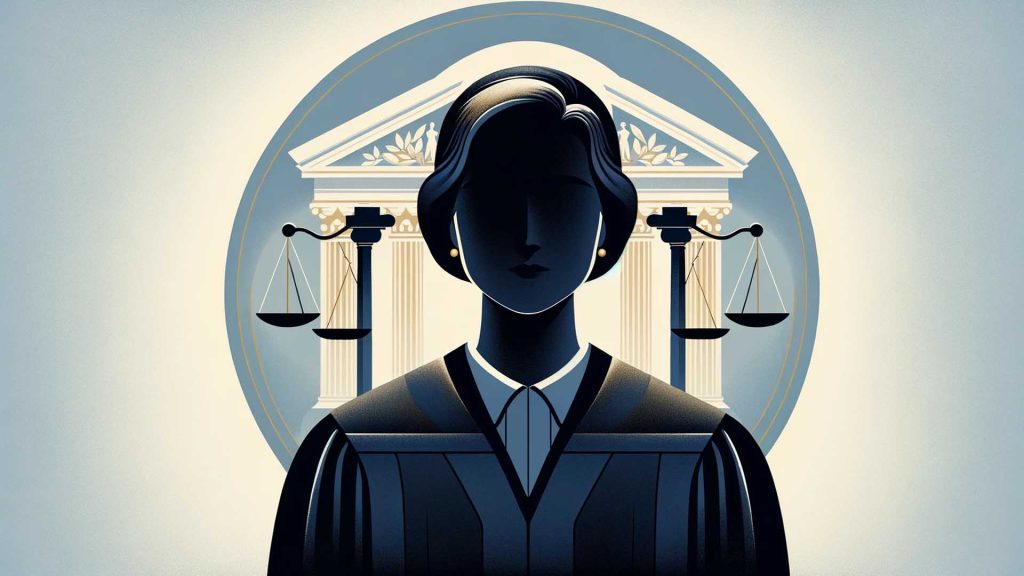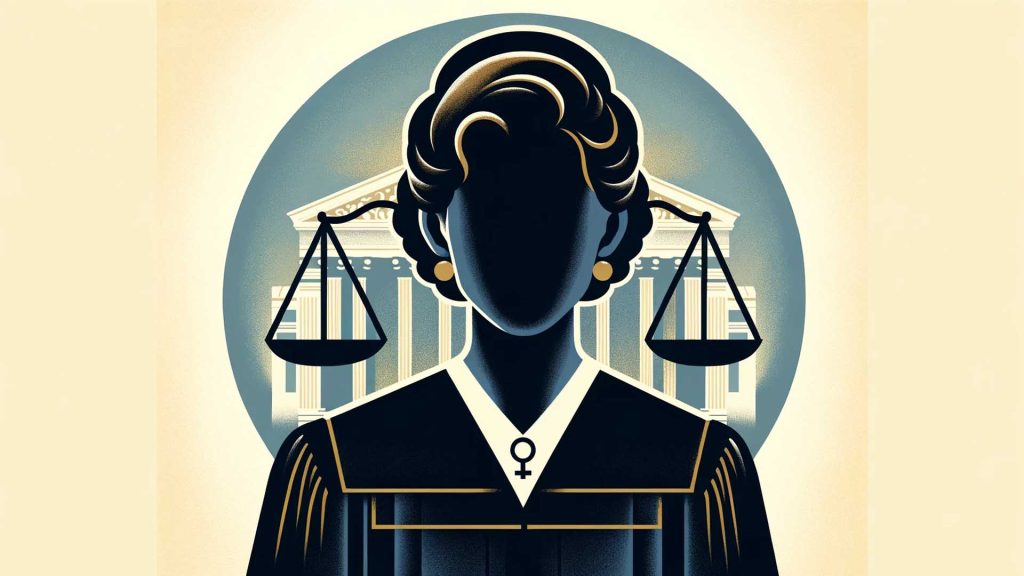Former U.S. Supreme Court Justice Sandra Day O’Connor, a trailblazer for women in the legal profession, an advocate for ideological compromise, and an educator who enlightened generations of Americans about their rights and responsibilities as citizens, has passed away.
The court officially confirmed her demise in a statement on Friday morning, citing “complications related to advanced dementia, most likely Alzheimer’s, along with a respiratory ailment.” She was 93 years old.
O’Connor made history as the first woman to serve on the highest court in the land, breaking a two-century-long tradition of male-dominated jurisprudence. Her graceful demeanor, unwavering independence, and compassionate approach earned widespread acclaim.
Historians widely regard her as one of the most influential women in American history.
Evan Thomas, O’Connor’s official biographer, remarked, “The legal realm was predominantly male, and the Supreme Court was a male domain. Her mere presence as a woman changed the entire landscape.”

While she embodied feminist ideals, O’Connor did not explicitly identify herself as such. She recognized that to gain acceptance among her male colleagues, who were waiting for her to falter, she needed to be cautious yet assertive. Striking this balance was challenging, but she succeeded admirably.
In 1981, Republican President Ronald Reagan nominated O’Connor, describing her as “truly a person for all seasons” and a constitutional conservative. He believed she would solidify the court’s conservative majority and fulfill his promise to appoint a qualified woman to the bench. O’Connor, then 51, emphasized during her confirmation hearing, “The judiciary’s proper role is to interpret and apply the law, not to create it.” The Senate confirmed her with a unanimous 99-0 vote.
Kate Shaw, ABC News Supreme Court analyst and former clerk for Justice John Paul Stevens, recalled the challenges O’Connor faced when she arrived. “There were no women’s restrooms near the justices’ conference room, and they had just removed the plaques that said ‘Mr. Justice’ from the offices. However, she adapted quickly and confidently, endearing herself to her colleagues.”

While she wasn’t seen as an ideological stalwart, O’Connor remained a devoted Republican, embracing the party’s values of limited government, self-reliance, and social conservatism, which were emblematic of the 1980s.
Linda Hirshman, author of “Sisters in Law,” which chronicles O’Connor’s relationship with Justice Ruth Bader Ginsburg, remarked, “She hailed from the country-club wing of the party and had a libertarian streak. However, Sandra Day O’Connor did not possess a clearly defined philosophy.”
O’Connor was known for her pragmatism and independence, qualities shaped by her modest upbringing on her family’s cherished Lazy-B ranch in southeastern Arizona.
For over two decades, O’Connor often cast the pivotal vote on a closely divided court. She authored landmark opinions on abortion and affirmative action and played a role, admired by some and criticized by others, in George W. Bush’s contested victory in the 2000 election.
Reflecting on her vote to halt additional Florida ballot recounts sought by Democratic nominee Al Gore in 2010, O’Connor said, “It was a tough decision to make, but what I do know is that there were at least three separate recounts in the four challenged counties, and in none of them would the outcome have changed. So I have no regrets.”

She staunchly defended First Amendment rights, with a particular focus on religious freedom. In a 1990 case from Oregon, she wrote, “A state that criminalizes an individual’s religiously motivated actions severely restricts that individual’s exercise of religion.” She believed that the right to free exercise was not absolute but contended that states should have a high bar for limiting religious practices.
In a closely decided case in 1984, O’Connor joined the court majority in upholding a Rhode Island town’s nativity scene as part of its holiday decorations. She argued that the display served a secular purpose – celebrating a public holiday with traditional symbols – and did not convey government endorsement of religion.
However, over time, many conservatives grew disheartened with O’Connor’s decisions. She was the pivotal vote in a case that reaffirmed abortion rights, striking down a Pennsylvania law in 1992 that mandated spousal notification for abortions. In the majority opinion for Planned Parenthood v. Casey, she wrote, “There are millions of women in this country who are victims of regular physical and psychological abuse by their husbands. Should these women become pregnant, they may have valid reasons for not wanting to inform their husbands about their decision to have an abortion.” O’Connor personally opposed abortion, but she considered the notification requirement an “undue burden” on a woman seeking an abortion.
This standard remained the litmus test for state regulations on abortion until the Supreme Court’s 2022 decision in Dobbs v. Jackson Women’s Health Organization overturned Roe v. Wade and the test in Planned Parenthood v. Casey.
O’Connor also grappled with the issue of race in college admissions. In 2003, she joined the court’s liberal justices in upholding race-conscious admissions at the University of Michigan Law School in Grutter v. Bollinger. She wrote, “In its individualized examination of all applicants’ potential contributions to diversity, the Law School’s race-conscious admissions program does not unduly disadvantage non-minority applicants.” Simultaneously, she suggested that affirmative action should be temporary, stating, “We anticipate that 25 years from now, racial preferences will no longer be necessary to advance the interests supported today.”
She supported the constitutionality of the death penalty but advocated for restrictions on its application, especially for the mentally ill. In a 2001 speech, she expressed concerns about the possibility that innocent defendants could be executed due to flaws in the system.
During her tenure, O’Connor underwent an evolution on gay rights. Initially, she voted to uphold a Georgia law criminalizing sodomy, but two decades later, she took the opposite stance in a similar case from Texas. In Lawrence v. Texas, she argued that Texas’ sodomy law, which criminalized same-sex relations but not opposite-sex ones, unfairly stigmatized homosexuals as criminals, thus violating the 14th Amendment’s Equal Protection Clause. In 2013, after retiring, she officiated the wedding of a same-sex couple at the Supreme Court.
While Sandra Day O’Connor left an enduring legacy as the first female Supreme Court justice, her decisions, especially those as the pivotal fifth vote, continue to be a subject of debate among legal scholars and activists.
????⚖️ During her tenure, the court was informally known as the “O’Connor Court” for a time, as she frequently served as the deciding vote in numerous controversial cases. She was particularly renowned for her pivotal vote in the 1992 case of Planned Parenthood v. Casey, which reaffirmed a woman’s right to have an abortion.
????⚖️With her own diagnosis, O’Connor exits public life.
Four years earlier, O’Connor had announced that she had been diagnosed with dementia, “probably Alzheimer’s disease.” Therefore, the then-88-year-old O’Connor explained that she would no longer “participate in public life.
???? O’Connor was born in El Paso, Texas, on March 26, 1930. She spent her childhood on the Lazy B, her family’s ranch in Arizona. O’Connor displayed a remarkable level of intelligence at a young age. Her family aimed to nurture her love for education, but schooling options near the ranch were limited for a young woman.

